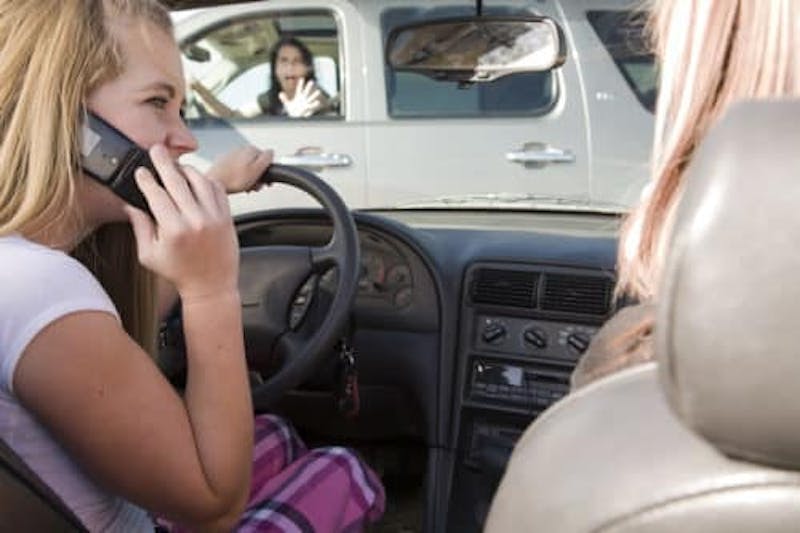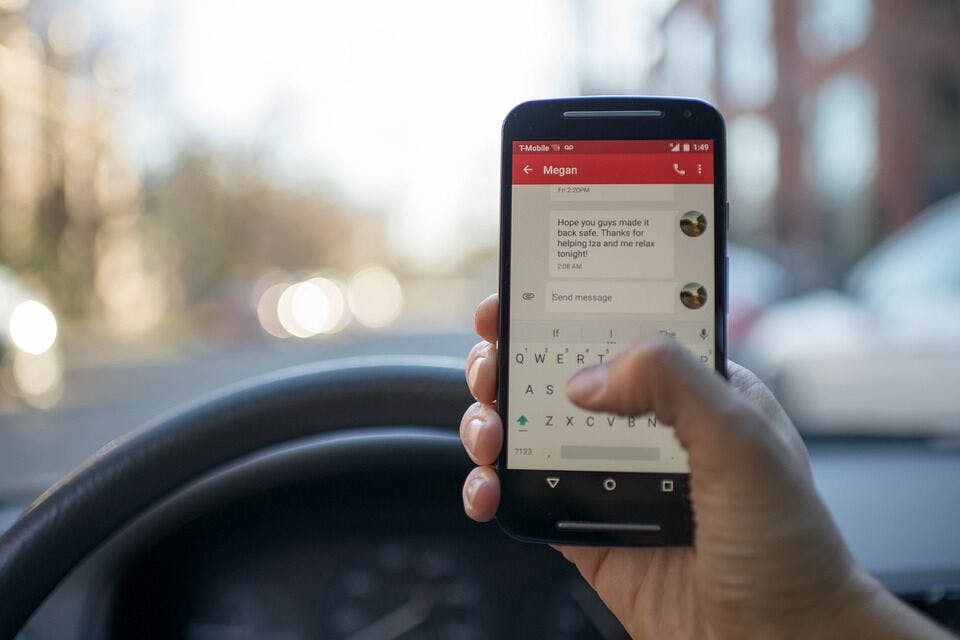Get a Free Consultation
2 minute response
24 hours a day, 7 Days a Week
Dedicated Trust Guss Intake Team

The more time you spend behind the wheel, the more you understand the risks of driving. Regardless of safety warnings, speed limits, and caution signs, drivers crash into other vehicles daily. Chronically bad drivers could avoid crashes by making simple changes in how they operate their vehicles. That’s unlikely to happen, but as a consistently safe driver, you can take steps to protect yourself and enhance your safety. For your first step toward safer driving, consider these five ways to reduce your risk of getting into a car accident.

Traffic safety experts invariably argue that human error is the primary reason for most vehicle accidents, injuries, and fatalities. Factors such as road conditions, weather, and view obstructions also play a role. When you look at the bottom line, you realize that the humans who navigate those hazards could slow down or avoid them, consequently avoiding a crash. When considering the distracted driving issue, you must acknowledge that it’s a 100 percent human shortcoming. Distracted drivers cause accidents simply because they believe they can multitask while driving. The fact that they keep crashing into other people’s cars disproves the multitasking myth. The National Highway Transportation Administration’s report Investigation and Prosecution of Distracted Driving Cases explains how when a driver is using a handheld device, their crash risk increases by 3.6 times.
The NHTSA’s most recent annual casualty data pinpoints distracted drivers as the cause of 3,142 fatal injuries in the U.S. alone. As law enforcement authorities can’t always prove that a driver was talking or texting, the NHTSA speculates that distracted driving accidents remain underreported. Despite state laws prohibiting phone or device use while driving, smartphones still present a dangerous distraction. These two actions can help prevent you from getting into an accident with a distracted driver.
The NHTSA explains that when drivers become distracted, they often operate their vehicles as though they are alcohol or drug-impaired. You might notice these types of driving behaviors.
Distracted drivers have always caused accidents. They rear-ended another car while changing the radio station or sideswiped a nearby vehicle while reaching for a fast food lunch. When these no-tech accidents occurred, the distracted driver usually never admitted what they were doing just before a crash. They took responsibility for their actions, as their role was difficult to deny. The current wave of distracted driving accidents began in the same low-profile way. A few decades ago, most drivers didn’t own or use cell phones, so authorities had few opportunities to evaluate the risks. Investigating officers now recognize distracted driving signs. Drivers still won’t always admit they caused the accident when they texted, reached for the item they dropped, or argued with their spouse. Because their negligent driving is usually so obvious, they cannot so easily avoid responsibility for their actions.
Legislators in most states have passed distracted driving laws. You can view state-specific details on the Governor’s Highway Safety Association’s Distracted Driving Chart. These laws vary, but they establish digital device ground rules and set penalties for violations. The National Transportation Safety Administration recommends completely banning digital devices while driving. The agency publishes a Most Wanted list of transportation safety improvements each year. “Eliminate Distracted Driving” has remained on the list for several years. Their investigations into major transportation incidents show how digital devices contribute to horrific damage and injuries. The National Safety Council agrees that drivers can’t manage digital device use while driving. Driving is cognitively demanding, requiring full engagement of a driver’s mind, eyes, and hands. The NDC’s report, Understanding Distracted Driving, discusses texting/talking while driving. Research has shown that drivers don’t multitask, not even when using a hand’s free device. They switch their attention back and forth between tasks. They increase their brain’s workload, and its processing slows down.
Based on recent annual NHTSA statistics, 11,654 people died in accidents where alcohol was a factor. All states have minimum alcohol consumption limits, stiff penalties, and enforcement strategies. These actions haven’t prevented drunk drivers from getting behind the wheel, so it’s up to you to protect yourself. To eliminate some of the potential crash risks, you must keep your distance from both drug and alcohol-influenced drivers. This sounds like too simple a strategy, but when you know what to look for, you recognize drunk drivers and avoid them. The NHTSA has pinpointed certain characteristics inherent to drunk or drugged drivers. They don’t stay in their lanes when they’re behind the wheel. They drive the wrong way and respond slowly to traffic signals. Drunk and drugged drivers exhibit many of the driving behaviors listed above.
State drunk driving laws implement graduated punishment strategies to keep convicted drivers off the road. The GHSA chart of Alcohol-impaired driving laws shows how each state manages this problem. When a drunk driver receives multiple convictions, most states charge higher fines and longer incarceration periods. State licensing agencies take away their driver’s licenses and vehicle license plates, and sometimes they impound their cars. Some states require convicted drivers to install ignition interlock devices. If the driver doesn’t pass an alcohol test, their car won’t start. The NTSB supports ignition interlock interventions for all drivers, whether or not they have a drunk-driving conviction on their records. Their recently-published article “NTSB Calls for Alcohol Detection Systems in All New Vehicles” explains their position. They believe all new cars should have an interlock device as standard equipment. This would shift the focus from drunk driver enforcement to prevention. It would also reduce the effort required to detect, restrain, prosecute, and follow up with drunk drivers.
When drivers are on drugs, they display the same bad driving behaviors as distracted and alcohol-influenced drivers. The problem with getting them off the road is that law enforcement agencies have no standardized tests. Most states use 0.08 percent BAC as a drunk driving indicator. While they have metabolite tests that indicate when a person has used certain drugs, they have no system for evaluating the quantity of drug intake that likely impairs a driver from safe functioning. Some state laws prohibit driving under the influence of any drug, and they penalize drivers only after a conviction. This means it’s up to you to look out for erratic driving behaviors and steer clear.
When you understand the worst periods for driving, the information helps you make informed choices about avoiding car accidents. When the NHTSA accumulates accident data from across the country, certain trends become apparent. They show that both alcohol-related and non-alcohol-related fatal accidents occur more frequently at nighttime and on weekends. You have a good choice of avoiding a car accident if you stay off the road during these time frames. The NHTSA’s most recent annual data for alcohol-related and non-alcohol-related fatal accidents reveals.
The NSC analyzed NHTSA accident data to create the report, Car Crashes by Time of Day and Day of Week. Their research determined:
These statistics won’t likely change your commuting habits. You probably won’t park your car and use public transportation, but that is one option for avoiding accidents. You probably won’t give up your Saturday date night if you enjoy dining and evening entertainment. You can still use the above data as motivation to become a more watchful, defensive driver. You can pay attention to those around you during peak crash hours and drive defensively if you notice a nearby person driving dangerously.
The Guinness Book of Records credits Volvo with developing the first crash avoidance system. In 2008, they embedded a laser in a windshield to monitor traffic in front of the vehicle. The car stopped automatically if it sensed a problem ahead and the driver didn’t apply the brakes in time. Crash avoidance technologies have moved forward quickly since then. They can’t stop all accidents from happening, but they can help prevent some of them. The range of technologies fits into two categories.
These technologies sound an audible warning when they sense that a crash might occur:
When a warning system notifies you of a hazard, you must still press the brake, swerve away from another vehicle, or take other defensive action.
Assist systems don’t rely on a driver’s response to avoid an accident. Instead of merely sounding a warning, they take immediate action. Available assist systems include:
The NTSB believes that collision avoidance and connected vehicle technologies could prevent accidents or reduce damages and injuries. They recommend that all vehicle manufacturers install these systems in new cars.
Trucking companies, taxis, and even pizza delivery services use driverless vehicles in their businesses. As an everyday consumer, you can’t buy one yet, but manufacturers promise them for future use. Tesla vehicles currently offer a suite of advanced technologies. Their website also explains that their new vehicles have the hardware for future driverless system implementation. They predict that drivers can eventually make trips with “no action required by the person in the driver’s seat.” So far, its driver assistance system, Autopilot, cannot do that—despite its name. Many Tesla vehicles have crashed when drivers turned their cars over to it—making the drivers and perhaps Tesla liable for the injuries those accidents caused.
Defensive driving is a proactive strategy to help you avoid getting into car accidents. As you drive, you monitor everything around you. You’re ready to avoid an accident if someone in a nearby lane makes a sudden move. If you search online, you’ll find several organizations offering defensive driving or safe driving courses. The National Safety Council offers online courses. The organization takes credit for developing the first defensive driving course in 1964. AARP also offers a Driver Safety course to help people aged 50 plus brush up on their safety skills in light of their changing needs. When you learn defensive driving, you develop skills that help you avoid accidents. Also, some insurers offer discounts when you take these types of courses.
This simple defensive driving concept encourages you to maintain a cushion of space between you and every vehicle on the road. It incorporates several familiar strategies to reduce your risk of a car accident.
If you sustain injuries due to a negligent driver’s actions, you need a car accident attorney. When you connect with a car accident lawyer, you can talk about your accident and learn more about your right to recover compensation. Contact a legal professional who will listen to your concerns and answers your questions. When you’re ready, you decide whether to file a claim or lawsuit knowing you have an experienced personal injury lawyer on your side.
2 minute response
24 hours a day, 7 Days a Week
Dedicated Trust Guss Intake Team